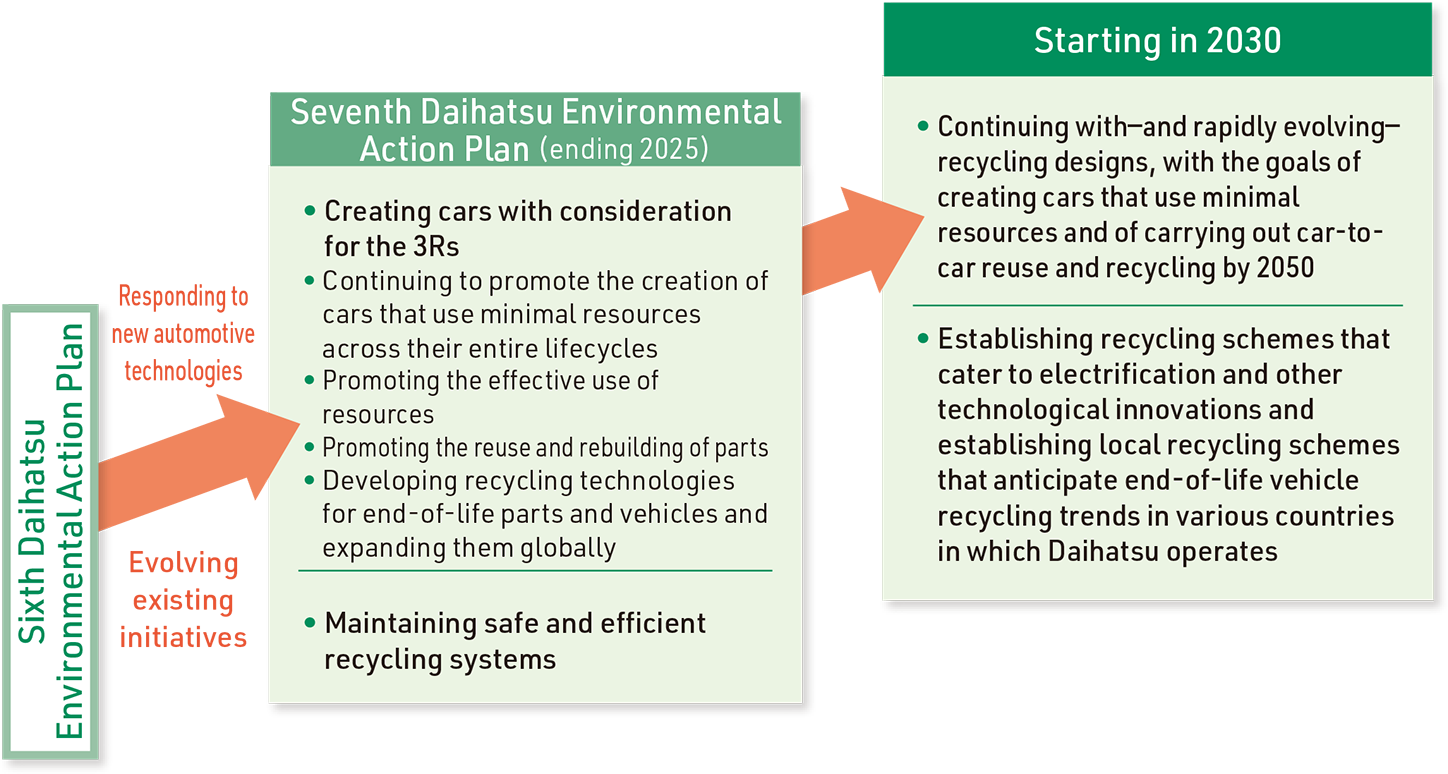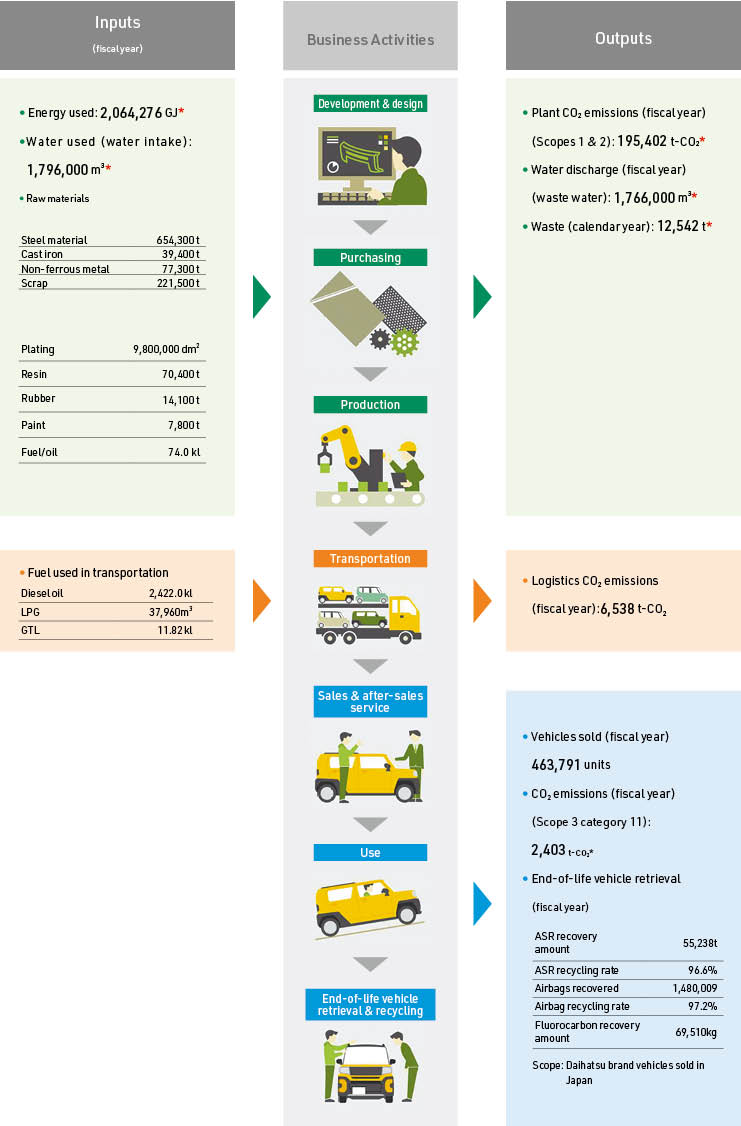Fundamental Approach / Goals for 2025 / Flow of Materials
-
Fundamental Approach / Goals for 2025 / Flow of Materials
-
Vehicle Recycling Initiatives in the Product Design Stage
-
End-of-life Vehicle Recycling Initiatives
-
Reducing Waste at Plants and Other Facilities / Production, Logistics, and Other Initiatives
Fundamental Approach
The manufacture of automobiles entails the use of a variety of different resources, including metals such as iron and aluminum, resin, glass, and rubber. Daihatsu seeks to create small-size cars that use minimal resources.
At the same time, we will continue and evolve vehicle manufacturing that uses minimal resources by developing vehicles that facilitate the 3Rs starting from the existing development and design stages so that we can achieve car-to-car recycling in which we reuse resources recovered from end-of-life vehicles as materials in the manufacture of new vehicles by 2050.
Existing Initiatives
Daihatsu has continuously taken action to recover resources and undertaken new initiatives as a part of its efforts to build a recycling society pursuant to the Sixth Daihatsu Environmental Action Plan.
CO2reduction
- Developing technologies aimed at using 100% bio-resins and recycled automobile shredder residue (ASR) materials
Promoting eco-design cars (cars with designs for easy resource recovery and easy dismantling)
- Formulating recycling design guidelines1
- Reducing attachment points
- Improving drainage of fuel and liquids
- Using material indicators
- Publishing disassembly manuals
1. Based on the recycling design guidelines set out by the Japan Automobile Manufacturers Association, Inc., of which Daihatsu is a member
Goals for 2025
In the Seventh Daihatsu Environmental Action Plan, Daihatsu outlined its goals for 2025. These goals include refining its existing initiatives of creating cars that use minimal resources and of reusing and rebuilding. We will also accelerate activities aimed at expanding car-to-car recycling in which we reuse resources recovered from vehicles that reach the end of their lives around 2050 in the manufacture of new vehicles.
To this end, in the design and development stages of cars that will be launched between 2030 and 2035, we intend to develop and incorporate items with high recyclability so that they can be disposed of more easily.
Flow of Materials Japan, 2024 results (Calendar year or fiscal year)
* Daihatsu production sites and Daihatsu Motor Kyushu Co., Ltd.

